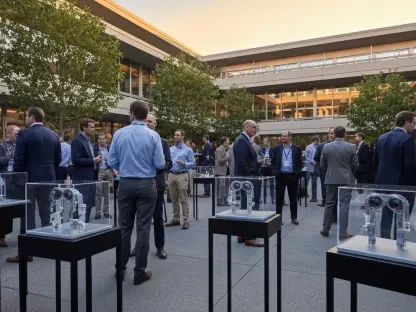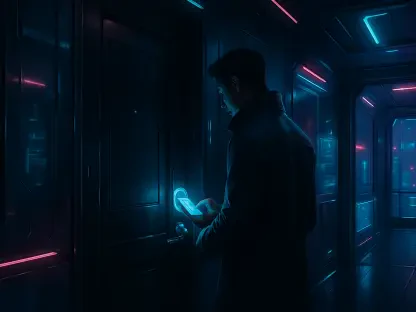In an era where food delivery has become a cornerstone of the dining industry, restaurants face the unique challenge of maintaining the warmth and hospitality of in-person dining through a process often handled by third-party services. With variables like delivery delays or mishandling beyond their control, many establishments are turning to creative strategies to ensure customers feel valued even when their meal arrives at the doorstep. The focus has shifted toward personalization—small, thoughtful gestures and innovative approaches that transform a transactional experience into a memorable one. This growing trend not only boosts customer satisfaction but also fosters loyalty in a highly competitive market. As delivery continues to dominate dining preferences, understanding how restaurants are bridging the gap between digital orders and personal connection offers insight into the evolving landscape of foodservice and the importance of human touch in an increasingly automated world.
Crafting Memorable Moments Through Small Gestures
The power of a personal touch in food delivery cannot be overstated, as even the smallest gesture can leave a lasting impression on customers. A recent secret-shopper study revealed that only a fraction of delivery orders—about 23%—include any form of personalization, yet when these elements are present, they significantly elevate consumer satisfaction. These touches often manifest as simple additions like extra sauce packets, handwritten thank-you notes, or complimentary items such as a small dessert. Such efforts aim to replicate the hospitality typically experienced in a restaurant setting, extending a sense of care beyond physical walls. For customers, these unexpected extras transform a routine delivery into something special, fostering an emotional connection with the brand. This strategy proves that even in a digital transaction, the essence of dining—feeling appreciated and valued—remains a critical factor in shaping perceptions and encouraging repeat business.
Beyond these small additions, restaurants are finding ways to surprise and delight through tailored offerings that reflect an understanding of customer needs. Some establishments include coupons for future orders or personalized messages that acknowledge a customer’s loyalty or specific preferences. These actions signal to the recipient that their business matters, creating a sense of individuality in an otherwise standardized process. The impact of such efforts is evident in the way they mitigate frustrations often associated with delivery, such as late arrivals or incorrect items. By focusing on what can be controlled—the contents and sentiment behind the package—restaurants are redefining off-premise dining as an extension of their in-house ethos. This approach not only enhances the immediate experience but also builds a foundation for long-term relationships, proving that even in a fast-paced, tech-driven industry, human connection remains a powerful differentiator.
Innovating with Technology and Packaging Solutions
To address common delivery pitfalls like cold food or missing items, many restaurants are leveraging technology and innovative packaging to ensure quality and accuracy. Chain operators have introduced formalized standards for off-premise orders, such as sealing to-go bags for security and using curbside technology to reduce wait times. Packaging by temperature is another tactic, ensuring hot and cold items maintain their intended state during transit. Additionally, some brands offer online-exclusive deals or loyalty perks through dedicated programs, tailoring the digital ordering process to feel more personal. These advancements demonstrate a commitment to consistency, addressing customer concerns about the reliability of delivery while enhancing the overall experience. By integrating tech solutions, restaurants maintain control over critical aspects of the journey, ensuring that the meal arrives as intended and reflects the care put into its preparation.
Another layer of innovation comes from testing new packaging designs and incentivizing first-party delivery channels to bypass third-party inconsistencies. For instance, certain eateries are experimenting with deli kits that include essentials like silverware and napkins, ensuring completeness in every order. Others provide incentives such as free delivery on qualifying orders through their own platforms, allowing greater oversight of the customer experience. These strategies not only tackle logistical challenges but also reinforce a brand’s dedication to quality, making customers feel prioritized. Independent operators, too, contribute to this trend by stocking specific items based on patron requests, turning one-time orders into opportunities for lasting engagement. Such efforts highlight how technology, when paired with a customer-centric mindset, can elevate delivery from mere convenience to a thoughtfully curated interaction that mirrors the in-restaurant experience.
Building Loyalty Through Customer-Centric Approaches
Personalization in delivery often hinges on honoring individual preferences and special requests, a practice that turns transactions into meaningful exchanges. Restaurants, both large chains and smaller independents, are increasingly attentive to customizing orders, whether by including a requested condiment or ensuring dietary needs are met with precision. This attention to detail shows customers that their unique requirements are not just noted but valued, fostering a sense of trust. By focusing on these specifics, establishments mitigate the impersonality of third-party platforms and create a direct line of connection with their audience. The result is a delivery experience that feels less like a gamble and more like a reliable extension of the restaurant’s commitment to service, encouraging customers to return for future orders with confidence in the consistency of care.
Moreover, the emphasis on building long-term relationships through personalized delivery practices is reshaping how restaurants view off-premise dining. Some operators actively seek to convert casual orders into loyal patronage by adding thoughtful extras or maintaining open communication channels for feedback. This proactive stance transforms potential dissatisfaction—stemming from external factors like delivery delays—into an opportunity to showcase hospitality. Whether through loyalty programs that reward frequent orders or by ensuring every package reflects meticulous attention, the goal remains the same: to make each customer feel uniquely appreciated. This customer-centric philosophy not only strengthens brand reputation in a crowded market but also underscores the broader industry shift toward viewing delivery as a vital touchpoint for connection, rather than a mere logistical necessity.
Reflecting on the Power of Personal Connection
Looking back, the journey of restaurants adapting to the complexities of food delivery reveals a shared dedication to personalization as a cornerstone of customer satisfaction. Thoughtful gestures, innovative packaging, and technology-driven solutions have been consistently employed to bridge the gap between digital orders and the warmth of in-person dining. These efforts, ranging from handwritten notes to tailored loyalty perks, underscore an industry-wide recognition that even small actions can transform a routine transaction into a memorable moment. As challenges like third-party inconsistencies persist, operators have turned inward, focusing on what they can control to elevate the experience. Moving forward, the focus should remain on scaling these personal touches through smarter tools and direct engagement, ensuring that every delivery carries the essence of hospitality. By continuing to prioritize individual connections, restaurants can solidify their place in an evolving market, turning every order into a step toward lasting loyalty.









